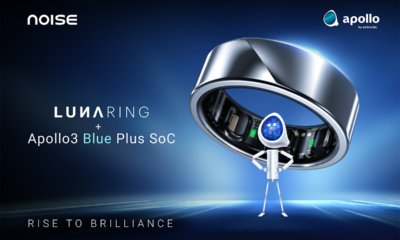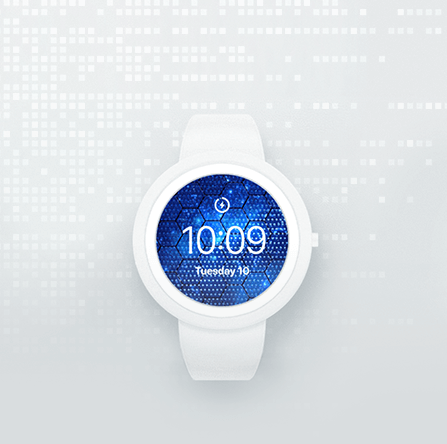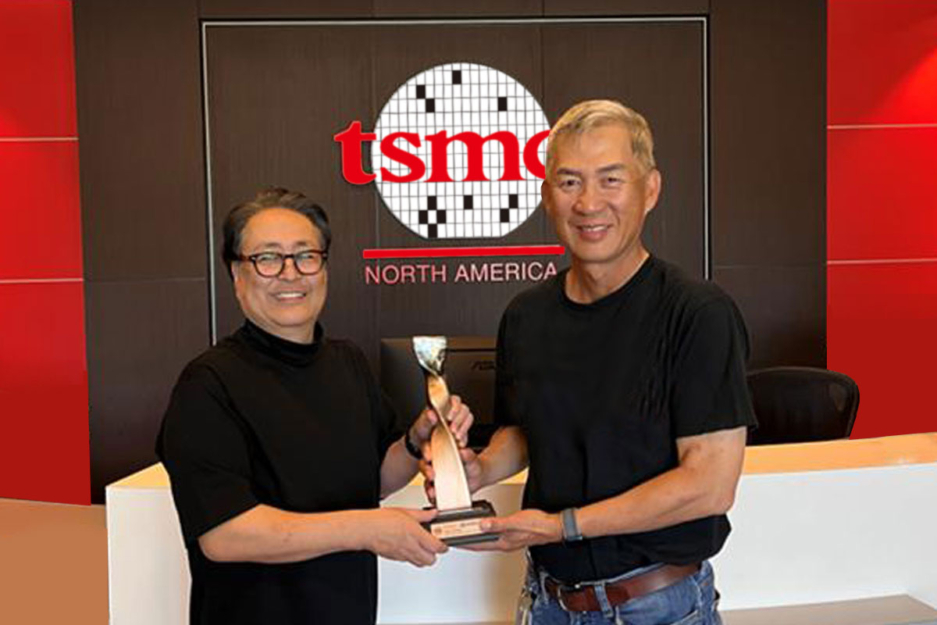Details, Fiction and pet health monitoring devices
Details, Fiction and pet health monitoring devices
Blog Article

Neil Armstrong's LM PPK contained a piece of wood within the Wright brothers' 1903 Wright Flyer's left propeller and also a bit of cloth from its wing,[81] along with a diamond-studded astronaut pin originally provided to Slayton because of the widows of the Apollo 1 crew.
“Singapore is uniquely positioned to Enjoy a essential part in driving the continued growth of technological innovation within the ASEAN location,” suggests Fumihide Esaka, chairman and CEO of Ambiq.
Every sample we share has an in depth study methodology utilized to deliver the report. Make sure you also get to our gross sales group for getting the complete list of our knowledge resources.
[157] In a 2010 interview, Armstrong stated that NASA constrained the main moonwalk's time and distance mainly because there was no empirical proof of the amount of cooling h2o the astronauts' PLSS backpacks would consume to manage their body heat era though working on the Moon.[162] Lunar ascent
[143] Inspite of some specialized and temperature issues, black and white visuals of the very first lunar EVA ended up received and broadcast to at the least 600 million people in the world.[143] Copies of the video in broadcast format were being saved and are broadly out there, but recordings of the original sluggish scan resource transmission from the lunar surface area ended up likely destroyed for the duration of plan magnetic tape re-use at NASA.[142]
We propose more money for other motor growth and for unmanned explorations—explorations which can be particularly significant for 1 reason which this nation won't ever overlook: the survival of The person who first can make this daring flight. But in a really authentic sense, it will not be a person guy visiting the Moon—if we make this judgment affirmatively, It will likely be a whole country. For all of us need to get the job done to put him there.
We would like to give special as a result of all People Individuals who built the spacecraft; who did the development, layout, the tests, and set their hearts and all their capabilities into These craft. To the individuals tonight, we give a special thanks, and to many of the Others which can be listening and watching tonight, God bless you. Fantastic night from Apollo eleven.[177]
The pause involving these actions would give time with the crew to escape by using the Launch Escape Tower or (within the afterwards stages with the flight) the propulsion program of your Provider module. A 3rd command, "Risk-free", was used following the S-IVB stage achieved orbit to irreversibly deactivate the self-destruct system. The technique was inactive as long as the rocket was even now on the launch pad.[seventy five] Startup sequence[edit]
On the Apollo 13 mission, the inboard motor experienced from big pogo oscillation, causing an early automated cutoff. To be sure adequate velocity was attained, the remaining four engines were saved Lively for extended than prepared.
These devices, run with the Ambiq Apollo3 Blue SoC, benefit from Bluetooth indicators to trace people today in proximity and can run without a recharge for a powerful 4 to six months.
Throughout the mission, the lead to was diagnosed given that the rendezvous radar switch getting in the incorrect situation, causing the computer to method knowledge from both of those the rendezvous and landing radars at the same time.[121][122] Software program engineer Don Eyles concluded in the 2005 Steering and Command Conference paper that the issue was as a result of a hardware layout bug Earlier viewed all through tests of the first uncrewed LM in Apollo 5. Having the rendezvous radar on (so it was warmed up in case of an emergency landing abort) should have been irrelevant to the pc, but an electrical phasing mismatch between two parts of the rendezvous radar system could cause the stationary antenna to appear to the pc as dithering forwards and backwards Wearable technology concerning two positions, relying on how the components randomly driven up.
The Apollo4’s total hardware and software package Alternative enables the battery-powered endpoint devices of tomorrow to realize an increased volume of intelligence without sacrificing battery lifestyle.
Proprietary audio interfaces and ultra-very low electric power analog microphone for actually often-on voice processing
delivering the Apollo spacecraft with a cost-free-return trajectory, one that will make it possible for it to coast throughout the Moon and properly return to Earth with out necessitating any motor firings ought to a difficulty crop up on the way for the Moon;
Get Smart. Use Less Energy.
Ultra-low power SoCs for IoT endpoint devices
that demand complex operations
and longer battery life.
✍ Ambiq® is committed to further improve the quality of life by enabling the intelligence of endpoints while further reducing carbon footprints. Ambiq – your partner in endpoint intelligence.
✯✯✯Based in Austin, San Jose, Hsinchu, Shenzhen, and Shanghai, our leadership and management teams consist of advocates, builders, enthusiasts, entrepreneurs, explorers, incubators, inventors, pioneers, protectors, thinkers, and visionaries. With a diverse spectrum of experiences and skillset, we came together and united with one goal to enable the true Internet of Things where the battery-powered endpoint devices can truly be connected intuitively and intelligently 24/7.
Ambiq Wins the Demo of the Year Award at 2023 TSMC Technology Symposium
September 7, 2023, Austin, TX – Ambiq®, a leading developer of ultra-low-power semiconductor solutions that deliver a Ai edge computing multifold increase in energy efficiency, was awarded the Demo of the Year Award by TSMC as a participant of the Innovation Zone at the 2023 TSMC North America Technology Symposium.
Ambiq Wins the Demo of the Year Award at 2023 TSMC Technology Symposium
During the April event, Ambiq showcased various product design wins using TSMC’s 22nm technology in wearables, digital health, smart home, Industrial IoT, pet trackers, and retail segments, with industry-leading energy efficiency. Ambiq also featured two live demos emphasizing its leadership in enabling endpoint AI with its HeartKit™ for remote patient monitoring and its graphics display capabilities for a vivid user interface. 
TSMC pioneered the pure-play semiconductor foundry business model when it was founded in 1987, helping startup companies accelerate their innovations by providing access to the industry’s leading process technologies and manufacturing capacity. Since 2021, TSMC has expanded that mission with an Innovation Zone at its worldwide Technology Symposiums, highlighting how TSMC partners with startup companies to enable cutting-edge products from various applications, including high-performance computing, communication, automotive, IoT, and consumer segments.
“We’re grateful to TSMC and our booth visitors for allowing us to share our energy-efficient technology and processor solutions with them,” said Ambiq’s CEO, Fumihide Esaka. “We’re moving towards an exciting frontier of AI becoming more engrained with our daily lives. With that vision on the horizon, we will continue to develop innovative and first-of-its-kind ultra-low-powered solutions that keep innovation and sustainability in mind. 
Ambiq’s mission is to develop the lowest-power semiconductor solutions to enable intelligent devices everywhere by developing the lowest-power semiconductor solutions to drive a more energy-efficient, sustainable, and data-driven world. Ambiq has helped leading manufacturers worldwide develop products that last weeks on a single charge (rather than days), while delivering a maximum feature set in compact industrial designs. Ambiq’s goal is to take Artificial Intelligence (AI) where it has never gone before in mobile and portable devices, using Ambiq’s advanced ultra-low power system on chip (SoC) solutions. Ambiq has shipped more than 200 million units as of March 2023.
Ambiq Designs Low-Power for Next Gen Endpoint Devices
Ambiq’s VP of Architecture and Product Planning, Dan Cermak, joins the ipXchange team at CES to discuss how manufacturers can improve their products with ultra-low power. As technology becomes more sophisticated, energy consumption continues to grow. Here Dan outlines how Ambiq stays ahead of the curve by planning for energy requirements 5 years in advance.
Ambiq Highlights From Embedded World 2024
Facebook | Linkedin | Twitter | YouTube